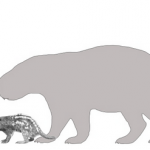A picture is worth a thousand keystrokes
We’ve all done it; inserted a “smiley-face” at the end of a flirtatious text message or a “sad-face” emoticon after a friend has poured her heart out online because, let’s face it, you weren’t really paying attention and didn’t know what else to type back. Modern day emoticons that many of people use on a day-to-day basis in online conversations are the distant cousins of “ASCII art,” a more elaborate graphic design technique in which pictures are created using letters and characters on computers to make images and text-based visual art.
ASCII art was born in part because of the lack of graphic capability that printers once had, which posed a problem when one needed to create a diagram, chart, or just a funny image; so text was used in place of scanned photos or Microsoft Excel spreadsheets to render whatever image was needed. Some of the earliest known pieces of ASCII art, by Kenneth Knowlton, a computer-art pioneer, and Leon Harmon were created in 1966. The form grew in popularity in the late 1970s to early 1980s. It was not only used on Bulletin Board Systems, but was also favoured by some underground artists. ASCII continued to be used in the early days of the Internet, before graphics and images were possible. Check out a few samples of ASCII art by David Bader at the botto of this post, from a series called “Silly Cows” dating from 1981-1994 via Clasohm.
However, this text-based art-form did not first appear via computers. As many of us often forget, there is a primitive typing device that was around about 100 years before the computer. Remember that thing with the horrible wi-fi connection and virtually zero gigabytes of memory that doesn’t even have a delete button? It is called a typewriter, and it’s where text art originated, before the days of scanners, photocopiers, jpegs, or gifs. Typewriters give artists an advantage that modern computers do not: artists can overstrike certain letters and characters to create a realistic shadow, and they can also rotate the paper to create type on different angles and vary the amount of space between letters.
Typewriter art likely was created shortly after the typewriter became fairly common in the 1870s, but what is thought to be the first surviving example is a beautiful picture of a butterfly created in 1898 by a woman named Flora Stacey, who is believed to have been a secretary. The butterfly itself is made of hyphens, brackets, periods, oblique strokes, o’s and a single asterisk. More recently, Washington State-based artist Tyree Callahan created a conceptual “painting typewriter,” which in theory has pads of oil paint that correspond to its coloured keys. Even though the it cannot actually produce paintings, Callahan’s “Chromatic Typewriter” has been getting the art community talking. He wrote on his blog, “The reaction to the piece has been pretty special. It seems to be making a lot of people happy and it has started some great discussions on the translation of art into words and words into art.”
So, while typewriters may be considered by some to be obsolete, they are still an extraordinary medium for producing impressive art. Check out this proposal for a typewriter documentary that tells us about the history of the typewriter and why it isn’t going anywhere any time soon. Producing art on these machines requires patience, concentration, and meticulous planning, all of which are virtues in today’s high-speed world. Here are some striking pieces of typewriter art that have cheered me up after spending my entire day mindlessly hashing out dozens of e-mails, and have reminded me of the beauty that is often forgotten in everyday things.














